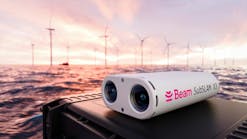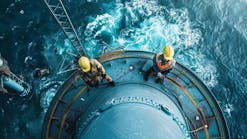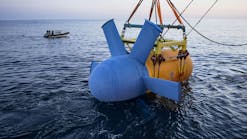Editor's note: This story first appeared in the September-October 2022 issue of Offshore magazine's first annual Offshore Wind Special Report. Click here to view the full Offshore issue or click here to view the special report.
By Catherine MacFarlane, S&P Global Commodity Insights
With annual offshore wind installation expected to double over the next four years, reaching 1,300 newly commissioned turbines in 2026 and more than 1,900 units in 2028, it is little surprise that the supply chain has responded rapidly over the last four years.
With demand coming from the mature Northwest Europe market, as well as the emerging APAC and US regions—and potential demand from other regions opening up—vessel owners and financial institutions have bet big on offshore wind. The rapid development of turbine technology, with average turbine sizes expected to increase from 8 MW in 2022 to about 18 MW in 2030 in developed markets, has also put the onus on vessel owners to keep pace by either ordering newbuilds capable of installing next-generation turbines or extensively upgrading existing units so they can remain working in the market.
According to IHS Markit’s ConstructionVesselBase, the wind turbine installation fleet (WTIV) currently has 16 vessels, excluding the Mainland China fleet. Of these vessels, seven are expected to undergo upgrades to remain in the market, with a 1,600-tonne crane upgrade on Fred Olsen Windcarrier’s Bold Tern already complete earlier this year. Meanwhile, there are 12 further newbuild WTIVs underway, including Cadeler’s F-Class jackup, which although primarily aimed at the foundation installation market, has also been designed to be capable of turbine installation. All of the newbuilds are expected to deliver between this year and 2025, with two—Blue Wind and the CP-16001—specifically to meet demand in the emerging Japan market, and a further two—Charybdis and Maersk Supply Service’s newbuild—contracted in the US market. However, the size of the future fleet will be tempered by the fact that six of the current fleet are expected to become obsolete by 2030 at the latest, due to their technical inability to install turbines larger than 10 MW.
Meanwhile, the foundation installation market and the fleet currently servicing it has come under the spotlight. WTIVs have traditionally played a large part in this market, augmented by floating heavy-lift crane vessels mainly from the oil and gas market. ConstructionVesselBase has a fleet of 26 vessels in the foundation installation market, excluding Mainland China, with 13 of these vessels also capable of installing turbines, if Heerema’s semisubmersibles Thialf and Sleipnir are included. XXL monopile foundations are defined by the GROW reach project SIMOX (Sustainable Installation of XXL Monopiles) as having a diameter bigger than 7.5 m and up to 11 m and weighing between 1,000 and 2,400 tonnes. With the increasing use of XXL monopile foundations, at least 10 of these vessels are likely to become obsolete in this market. Indeed, foundation manufacturer Sif is eyeing production of even larger monopiles with diameters up to 15 m.
While the WTIV newbuilds all have a lift capacity of at least 2,000 tonnes, with the exception of one vessel, the focus for these units is likely to be turbine installation, with several already contracted. Meanwhile, excluding the aforementioned Cadeler F-Class, a further four specialist foundation installation vessels are on order, all to be delivered between 2022 and 2025. However, delays to several current foundation installation campaigns have highlighted that there are already difficulties in accessing suitable vessels for this work.
This year has seen heavy-lift pipelayers Subsea 7’s Seven Borealis and NPCC’s DLS-4200 drafted in for foundation installation at Saint-Brieuc in France and Yunlin in Taiwan, respectively. And Heerema’s Sleipnir semisubmersible has replaced the Saipem 7000 on Fecamp, while the latter remains at Seagreen. Meanwhile, DEME’s Innovation has commenced monopile installation at Dogger Bank, with Seaway 7’s initial frontrunner vessel to the delayed newbuild Seaway Alfa Lift, Seaway Strashnov, still working on foundation installation for the Hollandse Kust Zuid project in The Netherlands.
However, there are question marks over the longevity of older, less capable vessels in a market where foundation sizes and weights are rapidly increasing. With nine of the fleet considered to be mainly oil and gas vessels and five straddling both markets, there could also be potential issues with meeting demand across the rebounding oil and gas market. Commitments in the decommissioning and pipelay market especially are likely to mean several of these vessels will not be fully available in the offshore wind market.
An Equinor and bp joint venture has already moved early to secure long-term supply of suitable foundation installation units and avoid delays to turbine installation and subsequent first power, with its seven-year agreement with Heerema for the Empire Wind and Beacon Wind projects. It may be that other developers follow suit with similar arrangements, with such agreements perhaps also opening the door to the financing of future newbuilds.
Catherine MacFarlane is the ConstructionVesselBase manager and technical research principal with S&P Global Commodity Insights. Note, IHS Markit is now a part of S&P Global.






